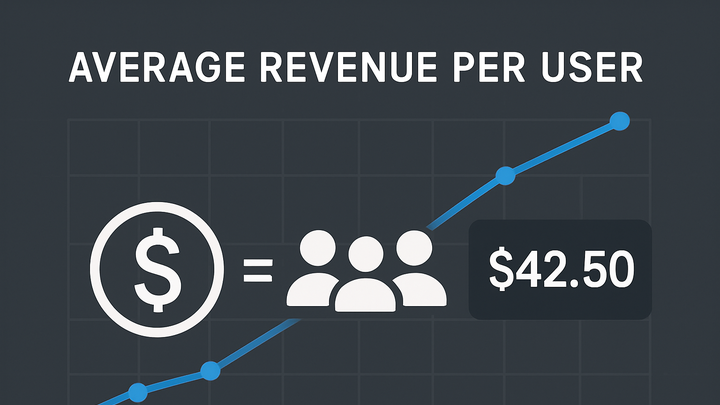Published on 2025-06-22T01:50:36Z
What is ARPU (Average Revenue Per User)?
Average Revenue per User (ARPU) is a key metric in analytics that measures the average revenue generated by each active user over a specific period. It is calculated by dividing total revenue by the number of users, providing insights into the monetization efficiency of a product or service. Businesses use ARPU to evaluate pricing strategies, benchmark performance across segments, and monitor financial health over time. Tools like Google Analytics 4 (GA4) and privacy-focused solutions such as PlainSignal help collect the necessary data to compute ARPU, whether through event-based tracking or cookie-free implementations. Tracking ARPU regularly enables organizations to spot revenue trends, compare cohorts, and make data-driven decisions for growth.
Arpu (average revenue per user)
ARPU measures average revenue per active user over time, guiding monetization strategies and performance benchmarking.
ARPU Definition and Significance
This section covers the basic definition of ARPU and why it’s pivotal in analytics and business strategy. It explains what ARPU stands for, how it offers insight into user monetization, and its role in guiding decision-making.
-
What arpu measures
ARPU quantifies the average revenue generated per active user over a defined period, providing a snapshot of product monetization efficiency.
-
Strategic importance
By tracking ARPU, companies can benchmark performance, assess pricing and marketing strategies, and identify revenue trends across customer segments.
Calculating ARPU
Learn how to compute ARPU accurately, covering the standard formula, considerations for different time frames, and data quality checks to ensure reliable insights.
-
Standard formula
ARPU = Total Revenue / Number of Users (within the same period). Ensure both revenue and user counts align on time frame for consistency.
-
Time frame selection
Choose daily, monthly, or annual periods based on business model and reporting needs. Monthly ARPU is common for subscriptions, while annual ARPU suits longer-term products.
-
Data quality considerations
Accurately define what counts as an active user and ensure revenue attribution is precise to avoid skewed ARPU values.
Implementing ARPU Tracking
Guidance on setting up ARPU tracking in analytics platforms, with step-by-step examples for GA4 and the cookie-free PlainSignal solution.
-
GA4 setup for arpu
In Google Analytics 4, enable e-commerce reporting or revenue events. Use the Gross Revenue metric alongside Active Users data to derive ARPU in custom explorations or dashboards.
-
Cookie-free tracking with PlainSignal
Insert the following snippet into your site’s <head> to track users and revenue without cookies:
<link rel="preconnect" href="//eu.plainsignal.com/" crossorigin /> <script defer data-do="yourwebsitedomain.com" data-id="0GQV1xmtzQQ" data-api="//eu.plainsignal.com" src="//cdn.plainsignal.com/plainsignal-min.js"></script> -
Ensuring data consistency
Align user definitions and revenue event triggers across platforms to maintain consistent ARPU calculations and valid cross-tool comparisons.
Use Cases and Best Practices
Explore practical applications of ARPU analysis, from cohort benchmarking to strategic planning, and learn common pitfalls to avoid in interpretation.
-
Cohort analysis
Compare ARPU across user cohorts (e.g., by signup month) to understand how product changes, pricing updates or marketing events influence revenue per user over time.
-
Industry benchmarking
Use sector-specific ARPU benchmarks to gauge performance against competitors and identify opportunities for growth or pricing adjustments.
-
Pitfalls and limitations
Be wary of churn impact, one-time promotions, and differing user definitions that can distort ARPU insights. Contextualize ARPU with other metrics like LTV and churn rate.
